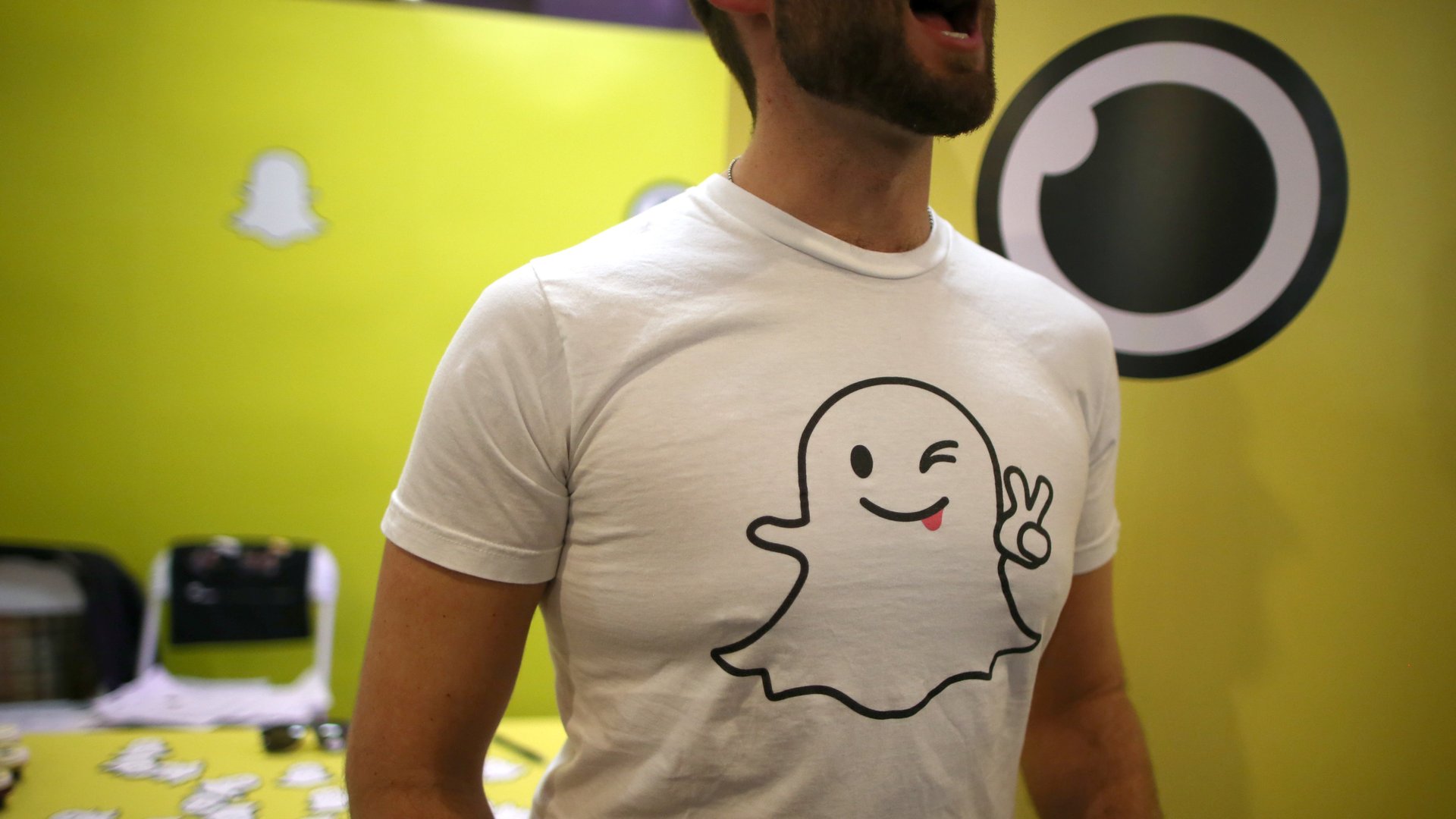Snapchat CEO Evan Spiegel doesn’t think olds have the patience for new technology
While touting the near-universal appeal of what Snapchat does—tell stories, essentially—Snap founder Evan Spiegel acknowledges that how Snapchat does it isn’t for everyone. Teenagers and millennials, yes. Older folks? Not so much.


While touting the near-universal appeal of what Snapchat does—tell stories, essentially—Snap founder Evan Spiegel acknowledges that how Snapchat does it isn’t for everyone. Teenagers and millennials, yes. Older folks? Not so much.
That’s fine with Spiegel, who took time on Snap’s earnings call with investors today to explain why drawing older populations is far from the app’s primary target. The 26-year-old CEO recounted “trying to teach [his] grandma how to use e-mail and she really preferred to just talk on the phone.” Spiegel recognizes that “things were different 20 years ago,” and that a lot of grandparents are using email now. The learning curve is likely identical for his product, too.
Snap “tend[s] to market our products directly to younger people,” Spiegel said, “because frankly they’re more interested in learning how to use new technology products.” In other words, the olds aren’t ready for Snapchat yet.
Earlier this year, Spiegel stuck his foot in his mouth by allegedly calling Snap an app for rich people. Under that gaffe was some robust reasoning: Using a real-time messaging app like Snapchat requires affordable, reliable data connections and a high-quality phone—with a camera, of course. His ageist view of Snap’s potential customer base is backed by logic, too. Snap is most popular among people belonging to the 18-to-29 age bracket, according to SurveyMonkey Intelligence, which measured activity by panel of US smartphone users over the age of 13. Less than 10% of Snapchat user’s currently are 50 or over. And that’s part of the app’s appeal to its target users.
Even if Snapchat isn’t ready to train 60-year-olds to use its puppy filters, it still needs a longer-term game plan to increase its base of older users—because that’s where the money is. In the US, the main driver of Snap’s revenue, Generation X (made up of 35- to 54-year-olds) has more spending power than any other generation, representing 31% of total US income despite comprising only a quarter of the population. And when your company has just reported a $2.2 billion quarterly loss, you can’t afford to be too choosy about who your next revenue dollar is coming from.